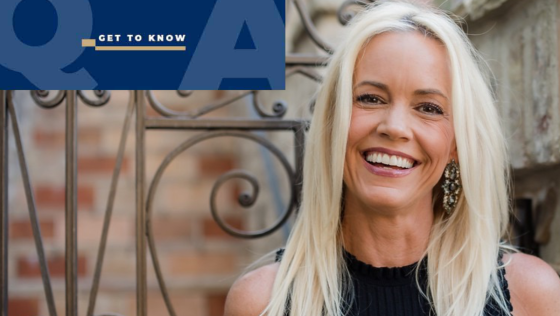
Tripp Davis, president of the Tripp Davis and Associates, discusses how he became interested in course design by making his own yardage books, the elements of a good course design and issues that the industry faces.
The First Call: Who is or has been your mentor / role model?
Tripp Davis: I have really had a lot of different people impact me as mentor or role models, but I have tried to be a gentleman and hard worker like my father.
TFC: Knowing what you know today, what professional advice would you give a younger you?
TD: When I got started my perspective was to work hard and not try to force the opportunities that would come my way — to let them come in due time, which frankly has worked out well. I may be one of the rare ones that may not change what I have been through.
TFC: When did you become interested in golf course design? Were you one of those kids who would draw imaginary holes in the back of your notebook during school?
TD: I started playing competitive golf when I was 11 and I would do my own yardage books at that point, which I think led to my early interest in golf course design. I drew holes and mapped out the best way to play the holes I was playing in competition, which led to me thinking of what would be better in design.
TFC: When did you decide this was the career for you, and please give us the Cliffnotes version of how you got to where you are today.
TD: I always wanted to try and play professionally, and after being an All-American at the University of Oklahoma my senior year I gave it try, but realized I lacked some essential physical skills to play at that level. So I came back to my love of golf course design and went back to school to get my Masters in Landscape Architecture to pursue that childhood dream.
TFC: In your opinion, what are the key elements of a good course design?
TD: Must be interesting to play, must function well in the landscape — be capable of being maintained to the expected level of quality, and it must be a visually interesting experience.
TFC: Your thoughts on the future of golf course architecture?
TD: I think the main challenge we face is not letting the professional game impact the way we design for the other 99% of those that play, but we do need to try to make the golf course interesting enough that course setup can adapt to how challenging we want a course to play. I also think that maintainability will be an increasingly important part of how we make golf courses financially sustainable.
TFC: Is the role of a shaper underappreciated?
TD: Very much so. I have employed my own shaper, Jason Gold, as an employee of our company for about 16 years now and he deserves a lot more credit than he gets.
TFC: One piece of work equipment you would be lost without?
TD: A digital level to get the surfaces of greens just right.
TFC: What’s the last book you read?
TD: “Driving the Green” by John Strawn. About the 10th time I have read It.
TFC: Which is more difficult, creating a course from scratch or renovating / restoring a current course? Why?
TD: It really depends on the project. A new course can be more difficult if the site is tough, but renovation and restoration can be more difficult to do in such a way the modern game fits.
TFC: How often do you play golf and when you do, is it difficult not to internally critique someone else’s work?
TD: I play an average of 4-5 times a month, but it is rarely consistent. I love to play, so I drag my clubs with me all over the country just in case.
TFC: You recently got the nod to renovate / reimagine the Atlanta Athletic Club’s Riverside Course. Being from Atlanta, how special is that going to be?
TD: Hard to put in words. I still stop and think every so often that I am actually going to get to do this. I think it will hit me more when we are actually doing the work.
TFC: What are a few other projects you have coming up?
TD: For 2022 we are also restoring the Donald Ross greens and greenside bunkers at Augusta Country Club in Georgia, which will be really interesting and fun. Getting to work on that historic site is special. We are also renovating and redesigning the Thunderbird Country Club in Rancho Mirage, California, which hosted the 1955 Ryder Cup. It is such a great club and environment that I am excited to see them play what we finish. We are doing a bunker renovation at FarmLinks, south of Birmingham, which is with a great group of people on a really cool site.
TFC: What has been your most gratifying — not necessarily your best or favorite — work to date?
TD: They have all been gratifying and I learn a little more with each.
TFC: When you’re not at work, you can be found where?
TD: Home with my family.
TFC: Favorite par-3, par-4 and par-5 holes in the world?
TD: First par 3 to come to mind is No. 10 at Pine Valley — short but deadly, but I also really love to play the eighth at Oak Tree National. No. 6 at Seminole is one of the most strategic par 4s in the game, and I really like the sixth at L.A. Country Club North. And I can't wait to play the fifth at Atlanta Athletic Club Riverside, which will be a new par 5 we are doing there.
TFC: What is more difficult to design — a par-3 or par-5 hole?
TD: If you don't force it, neither are that difficult to do well. Just work with the land and make sure it has variety and interest. Some think a par 3 is hard to have variety, but not if that is your objective and you commit to it.
TFC: What is your general design philosophy?
TD: Give what we do strategic variety and interest; give it the flexibility to be set up a lot of different ways relative to level of challenge; make sure to design in wider margins for error for the average to higher handicap player, and smaller margins for error for the better player; make sure it is maintainable to a high level of quality at each place; and give the course its own unique sense of place that fits the culture of where it is.










